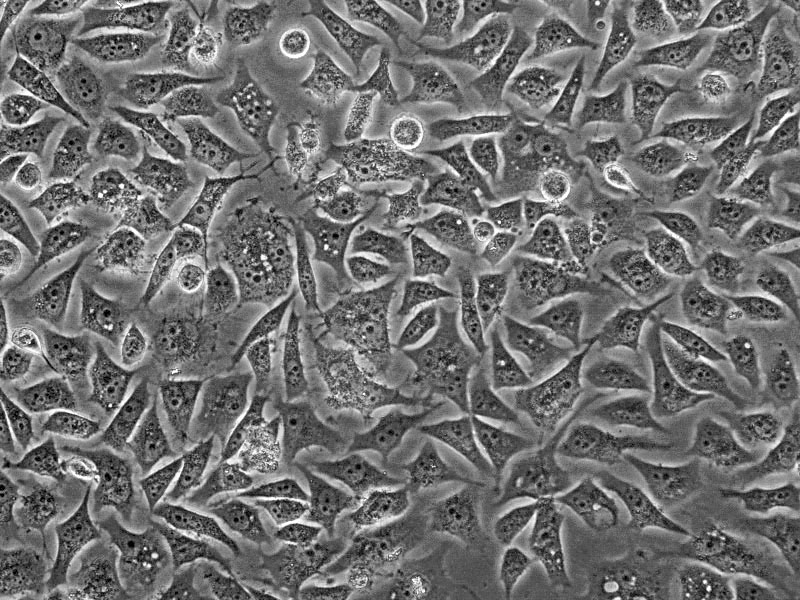PC3 on:
[Wikipedia]
[Google]
[Amazon]
 PC3 (PC-3) is a human
PC3 (PC-3) is a human

 The PC3 cell line was established in 1979 from bone metastasis of grade IV of
The PC3 cell line was established in 1979 from bone metastasis of grade IV of
Information on PC3
in the ATCC catalog
Cellosaurus entry for PC3
Human cell lines Cancer research Urology Prostate cancer {{cell-biology-stub
 PC3 (PC-3) is a human
PC3 (PC-3) is a human prostate cancer
Prostate cancer is cancer of the prostate. Prostate cancer is the second most common cancerous tumor worldwide and is the fifth leading cause of cancer-related mortality among men. The prostate is a gland in the male reproductive system that su ...
cell line
An immortalised cell line is a population of cells from a multicellular organism which would normally not proliferate indefinitely but, due to mutation, have evaded normal cellular senescence and instead can keep undergoing division. The cel ...
used in prostate cancer research and drug development. PC3 cells are useful in investigating biochemical changes in advanced prostate cancer cells and in assessing their response to chemotherapeutic agents
Chemotherapy (often abbreviated to chemo and sometimes CTX or CTx) is a type of cancer treatment that uses one or more anti-cancer drugs ( chemotherapeutic agents or alkylating agents) as part of a standardized chemotherapy regimen. Chemoth ...
. PC3 cells are also used to study viral infection in mammalian cells that exhibit an immune response
Description

 The PC3 cell line was established in 1979 from bone metastasis of grade IV of
The PC3 cell line was established in 1979 from bone metastasis of grade IV of prostate
The prostate is both an accessory gland of the male reproductive system and a muscle-driven mechanical switch between urination and ejaculation. It is found only in some mammals. It differs between species anatomically, chemically, and phys ...
cancer in a 62-year-old Caucasian male. These cells do not respond to androgens, glucocorticoids or fibroblast growth factors, but results suggest that the cells are influenced by epidermal growth factors. PC3 cells can be used to create subcutaneous tumor xenografts in mice to investigate the tumor environment and therapeutic drug functionality.
PC3 cells have high metastatic
Metastasis is a pathogenic agent's spread from an initial or primary site to a different or secondary site within the host's body; the term is typically used when referring to metastasis by a cancerous tumor. The newly pathological sites, then, ...
potential compared to DU145
DU145 (DU-145) is a human prostate cancer
Prostate cancer is cancer of the prostate. Prostate cancer is the second most common cancerous tumor worldwide and is the fifth leading cause of cancer-related mortality among men. The prostate is a gla ...
cells, which have a moderate metastatic potential, and to LNCaP
LNCaP cells are a cell line of human cells commonly used in the field of oncology. LNCaP cells are androgen-sensitive human prostate adenocarcinoma cells derived from the left supraclavicular lymph node metastasis from a 50-year-old caucasian ma ...
cells, which have low metastatic potential. Comparisons of the protein expression of PC3, LNCaP, and other cells have shown that PC3 is characteristic of small cell neoendocrine carcinoma.
PC3 cells have low testosterone
Testosterone is the primary sex hormone and anabolic steroid in males. In humans, testosterone plays a key role in the development of male reproductive tissues such as testes and prostate, as well as promoting secondary sexual characteris ...
- 5-alpha reductase and acidic phosphatase activity, and do not express PSA (prostate-specific antigen
Prostate-specific antigen (PSA), also known as gamma-seminoprotein or kallikrein-3 (KLK3), P-30 antigen, is a glycoprotein enzyme encoded in humans by the ''KLK3'' gene. PSA is a member of the kallikrein-related peptidase family and is secreted ...
). Furthermore, karyotypic analysis has shown that PC3 are near-triploid, having 62 chromosomes. Q-band analysis showed no Y chromosome. From a morphological point of view, electron microscopy
An electron microscope is a microscope that uses a beam of accelerated electrons as a source of illumination. As the wavelength of an electron can be up to 100,000 times shorter than that of visible light photons, electron microscopes have a ...
revealed that PC3 cells show characteristics of a poorly-differentiated adenocarcinoma
Adenocarcinoma (; plural adenocarcinomas or adenocarcinomata ) (AC) is a type of cancerous tumor that can occur in several parts of the body. It is defined as neoplasia of epithelial tissue that has glandular origin, glandular characteristics, o ...
. They have features common to neoplastic cells of epithelial origins, such as numerous microvilli, junctional complexes, abnormal nuclei and nucleoli, abnormal mitochondria, annulate lamellae, and lipoidal bodies.
See also
*DU145
DU145 (DU-145) is a human prostate cancer
Prostate cancer is cancer of the prostate. Prostate cancer is the second most common cancerous tumor worldwide and is the fifth leading cause of cancer-related mortality among men. The prostate is a gla ...
* LNCaP
LNCaP cells are a cell line of human cells commonly used in the field of oncology. LNCaP cells are androgen-sensitive human prostate adenocarcinoma cells derived from the left supraclavicular lymph node metastasis from a 50-year-old caucasian ma ...
References
External links
Information on PC3
in the ATCC catalog
Cellosaurus entry for PC3
Human cell lines Cancer research Urology Prostate cancer {{cell-biology-stub